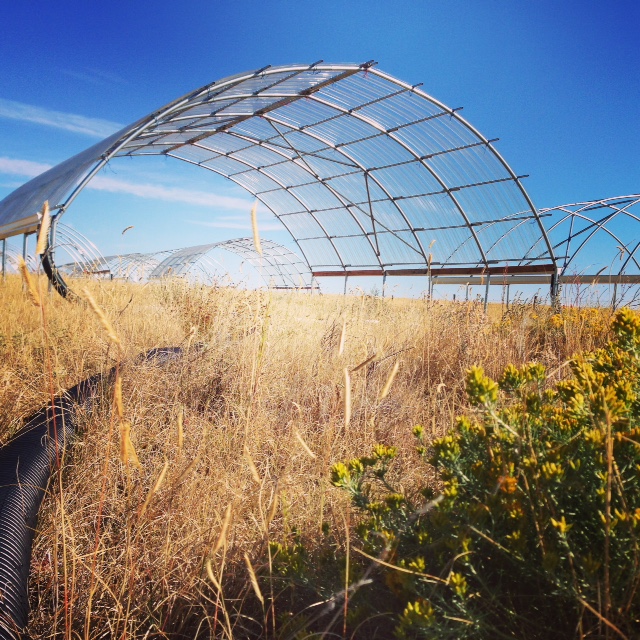
The End of Rain, the Start of Drought-Net

In early September, a group of bright and accomplished researchers, ranging from environmental historians and educators to ecologists and land managers, descended on Estes Park, Colorado to share ideas and resources on long-term data in the field of ecology. Since the 1980s this group has come together every three years for the Long Term Ecological Research All Scientist Meeting (LTER ASM), to discuss big picture environmental challenges of our time.
Among the scientists there was CSU’s Dr. Melinda Smith from the Department of Biology, giving a workshop on Drought-Net.
Extremes in climate such as precipitation are the primary way that we the public experience climate change. The current record-breaking drought in the western United States, especially in California, is a perfect example of the how rain dramatically impacts our daily lives directly (e.g. shorter showers, infrequent car-washing, lawn conversion to rock gardens and drip irrigation) and indirectly (e.g. the reduction of water-intensive crops such as almonds). Water- limitation is a problem that is here to stay, though the long term effects and our own ability to adapt are still unclear.
Dr. Smith’s work has been instrumental in answering the call for long-term, coordinated, and innovative ecological research on water-limited ecosystems.
The goal of Drought-Net, now in its second year of National Science Foundation funding, is to improve global ecological understanding of terrestrial ecosystem sensitivity to drought. Currently, Drought-Net has more than 300 members representing more than 15 countries. To improve global understanding of terrestrial ecosystem sensitivity to drought, Drought-Net is coordinating two main activities. The first, called Enhancing Existing Experiments (EEE), is aimed at coordinating existing, ongoing drought experiments across the globe, putting together new platform to synthesize data and coordinate research. Drought-Net is currently identifying these ongoing drought experiments and will be holding the first meeting in early February 2016.
The second major activity is the International Drought Experiment (IDE), a new network of highly coordinated drought experiments using standardized methodologies. The goal of this experiment is to impose a statistically extreme drought (representing the 1% quantile of annual precipitation based on long-term, site-specific climate data) over a four-year period in a diverse array of terrestrial ecosystems (ranging from desert to tropical forest). Importantly, the Drought-Net RCN does not having funding to establish IDE at individual sites, thus the success of IDE relies on investments by individual investigators or sites. IDE is slated to begin drought treatments in 2016; however, investigators and sites are encouraged to join at any time over the next four years. Currently, IDE has more than 80 registered participants/sites, and this number is only expected to continue to grow.
For those interested in learning more about Drought-Net, please visit: www.drought-net.org.
Drought-Net is a Research Coordination Network (RCN) funded by the National Science Foundation. Dr. Melinda Smith (Colorado State University) is the PI of the project, with Dr. Osvaldo Sala (Arizona State University) and Dr. Richard Phillips (Indiana University) as co-PIs. Smith, Sala and Philips, along with nine other national and international scientists, serve on the Drought-Net steering committee.